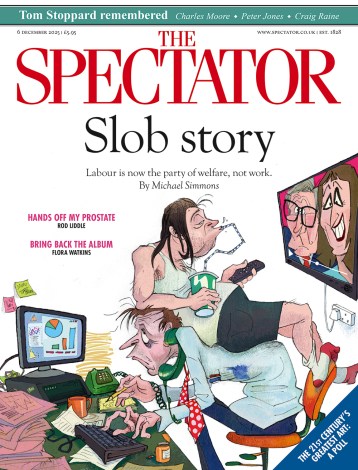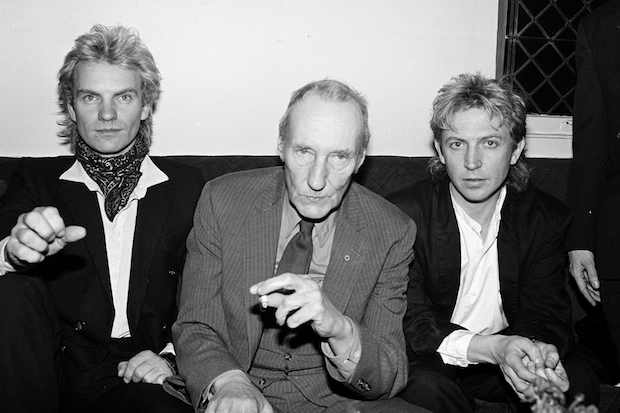William S. Burroughs lived his life in the grand transgressive tradition of Lord Byron and Oscar Wilde and, like all dandies, he had a nose for hedonistic hot spots which he could mythologise along with himself. On the occasion of his centenary, Barry Miles takes us through these gorgeous, macabre scenarios with an attention to detail reminiscent of Dadd or Bosch: the boyhood in suburban St Louis; Harvard and early trips to Europe; the war, Greenwich Village and the Beats; Latin America and exile in 1950s Tangier, Existential Paris, Swinging London; the return to the USA and emergence as a literary celebrity adored by Warhol. The wheels are oiled with drugs, guns and sex, suicides and murders, comedy, neuroses and madness, intellectual experiment, numerous cranky collaborators and far-out disciples. But the muse touched the mess — and hey presto, a great writer was born.
The history of modernist literature is the history of ‘outsiderdom’ and Burroughs’s Naked Lunch (1959) is the last key novel in that particular trajectory. With its montage ‘open text’ techniques, it is also the herald of post-modernism and of his own future work. The fact that his drug-addled brain could not by that time produce coherent narrative does not undermine Burroughs’s achievement, because the vitality of the oeuvre is inarguable: texts a-swarm with new creatures, images, ideas, bizarre hilarities and prosodic ingenuities. Miles’s biography is especially useful in demonstrating how the novels sprang from their author’s life.
Much of the story is already familiar because the Beat Movement is a sort of later American equivalent to England’s Bloomsbury Group — a social and artistic avant garde celebrated as soap opera in countless films and books, with Burroughs as the Lytton Strachey figure, a presiding authority of outrage and cool. He became in due course the cynosure of every smart-Alec druggie know-all, but Miles manages to get behind this to identify a warmer, more vulnerable man of rich complexity.
Since Burroughs is one of the most important writers of the 20th century, it’s worth noting some reservations concerning this latest biography. Miles chooses to open with a long account of the exorcism Burroughs underwent with a Navajo shaman, hoping to rid himself of an ‘ugly spirit’ he believed had entered and possessed him. Burroughs’s occultism may be an aspect of his poetical mind; but like his other fads it can be fatuous if not kept in perspective, because here was a man variously stoned on opiates, marijuana, alcohol and many other drugs to the end of his days. For his biographer to emphasise occultism at the outset reads like a bid for Castaneda-style momentousness and is degrading.
Burroughs saw himself as a scientist too, researching into psychology, sociology, political theory, biology and neurology. Again, these pursuits have no autonomous academic worth and are important to the extent that they fed his gift for fabulism. He was a liberating and generous operator, but his centre is not as prophet or philosopher, but as a writer of fiction. Literature can include speculative ideas; but it diminishes him, and literature too, to try to reverse the precedence.
The same applies to his painting and photography: very attractive but derivative, and only significant by virtue of his status as a novelist. We must always come back to this, otherwise the Burroughs phenomenon can peter out in Aleister Crowley silliness. Miles never makes this point clearly — perhaps he doesn’t agree with it — and one is left with the feeling that, for all his magnificent bureaucratic exertions, his biography is still a product from the inner circle of devotees.
There is little on the reception of the novels after Naked Lunch or on how final drafts were actually put together, especially the degree of attribution due to the collaborators. I deliberately saved Burroughs’s last book, The Western Lands, to read for the first time only two years ago; and I was startled by its phantasmagorical beauty, withthe author’s abiding themes refreshed in prose of high mandarin sheen — so much so that I did wonder to what extent an assistant may have been at work with the polisher.
Unsurprisingly in such a vast concoction, Miles’s biography is peppered with minor errors. Taking some from only our local view, it’s Downside School not Downside College; April Ashley’s sex-change took place in 1960 not after 1965; Bays-water is early Victorian rather than Regency; the May Fair Hotel is in Stratton Street not Berkeley Square. This may sound carping, but these things should be ironed out in what will presumably be the standard biography of reference for decades to come.






Comments